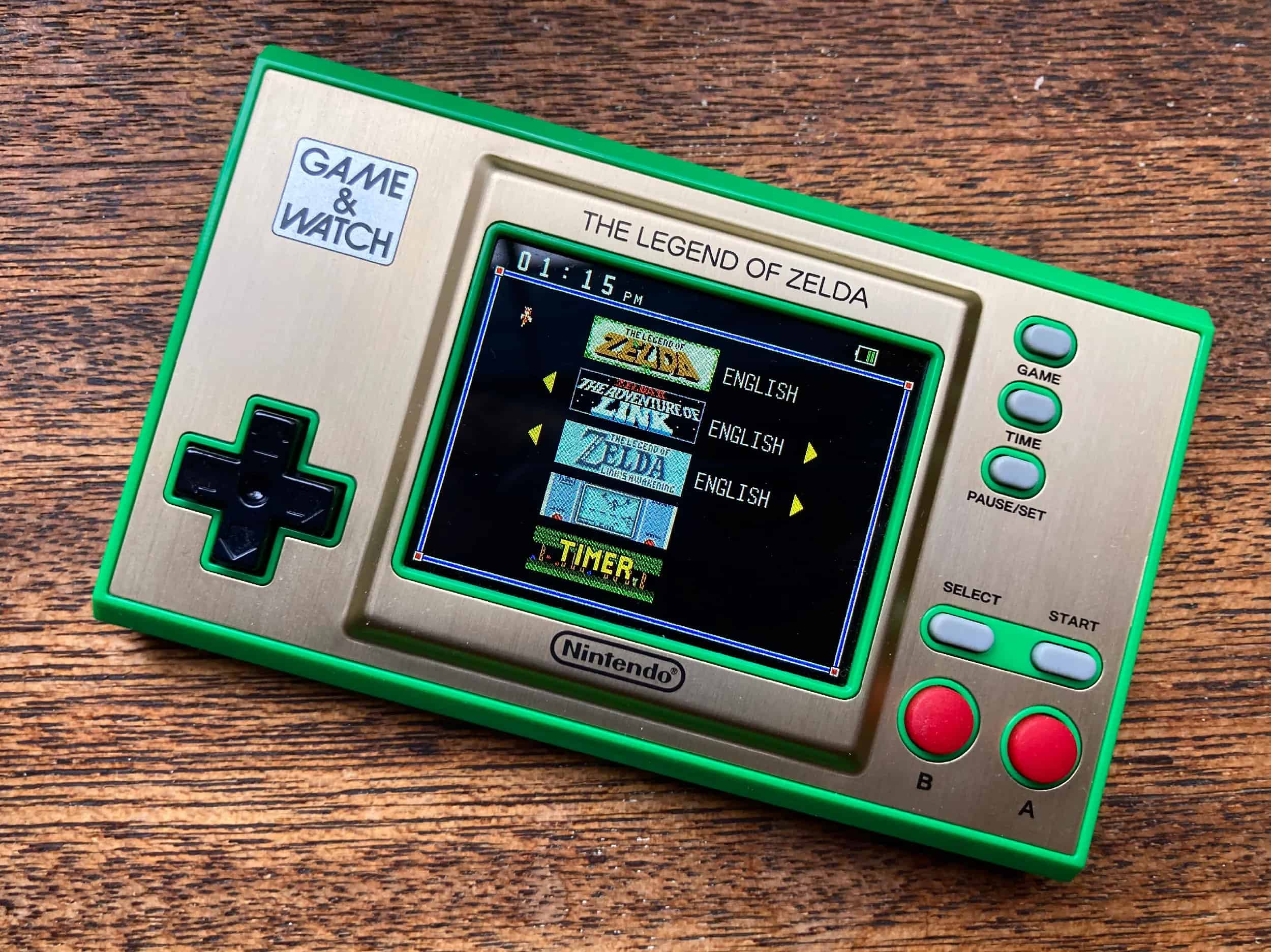In terms of ultra-cool retro gadgets that exude the classic 1980s Nintendo aesthetic, you’d be hard-pressed to beat the Game & Watch handheld devices. Since their original run between 1980-1991, these devices have had a bit of a comeback thanks to some licensed tie-ins with classic Nintendo first-party games. Most notably, the 35th anniversaries of both Super Mario Bros. and The Legend of Zelda included the release of special edition Game & Watch handhelds that call back to the era of each series’ origins
Despite each of these classic Nintendo franchise devices quickly selling out in their initial run, both the Mario and Zelda Game & Watch handhelds are available on the secondary market for lower prices than their suggested retail value. The biggest question surrounding these niche handheld devices is whether they’re worth the price if you currently own another Nintendo handheld device, and ultimately the answer falls to how much nostalgia you may have for Nintendo’s golden era in the 1980s. Still, the Game & Watch brand is one of the most important and impactful in Nintendo’s history, and it makes perfect sense that the company’s two biggest franchise would get their own versions.
What Is the Game & Watch?

Nintendo’s Game & Watch are a successful run of single-game portable devices that released between 1980 and 1991 under the design and tutelage of Nintendo’s head of Research and Development, Gunpei Yokoi. According to anecdotes from Yokoi himself, he was eager to find a new product for Nintendo to produce that didn’t require petroleum (such as plastic toys or board games) in the wake of the 1973 oil crisis. One day while riding the train into work, Yokoi spotted a businessman playing with his calculator, which apparently served as the inspiration for the Game & Watch. Using a simple LCD screen very similar to a calculator, Yokoi designed a portable handheld that contained both a watch to tell time and a single game to entertain users, hence the name “Game and Watch.”
Game & Watch devices proved to be a massive success for Nintendo, and their design inspired Gunpei Yokoi to create one of the most successful video game consoles of all-time: the Game Boy. Additionally, the multi-screen Game & Watch handhelds from the late 1980s would help to drive the design of Nintendo’s DS system, which has the distinction of being the second best-selling console in history. Yokoi’s legacy as one of Nintendo’s driving forces to completely dominate the Western and Japanese video game markets is best felt in Nintendo’s handheld devices. The very first of these is the Game & Watch, an important foundational building block of Nintendo’s later success.
History of The Legend of Zelda Game & Watch

The Game Boy would ultimately replace the Game & Watch, leading to its retirement just two years after its release. However, after the success of both the Game Boy and the Game Boy Advance, Nintendo started producing anniversary edition versions of the Game & Watch that closely adhered to the original designs and selling them as collector’s items. Eventually, Nintendo decided to produce an improved version of their classic handheld featuring a full-color screen for the anniversary of its most iconic franchise — Super Mario Bros. The release of the special edition Game & Watch for Super Mario Bros. coincided with the game’s 35th anniverary in 2000 and would quickly become a collector’s item.
A year later, in 2001, Nintendo followed up its Mario Game & Watch with a version celebrating the 35th anniversary of The Legend of Zelda. Similar to the Mario G&W, the Zelda version uses a color scheme and design aesthetic reminiscent of the era of its release, and includes special Zelda-themed clocks for the device’s watch component. Released on November 12, 2001, The Legend of Zelda Game & Watch was another successful retro item for Nintendo, quickly selling out and becoming an in-demand collector’s item and holiday gift following its short availability at retail.
The Legend of Zelda Game & Watch’s Unique Features

Like the Mario version of the iconic device, The Legend of Zelda Game & Watch has some unique features that differentiate it from other G&W devices. First and foremost, the Zelda version of the device features an iconic gold and green color scheme that calls to mind both Link’s tunic and the original NES cartridge for Legend of Zelda. Additionally, the device features a full-color screen versus the older Game & Watch devices’ simple one-color LCD displays. In terms of what the device includes, players can experience the following titles on the Zelda G&W:
- The Legend of Zelda (NES, 1986)
- Zelda II: The Adventure of Link (NES, 1988)
- The Legend of Zelda: Link’s Awakening (Game Boy, 1993)
- Vermin feat. Link (Game & Watch classic)
- Zelda numbering and background scenes with clock/time function
Where Can I Get the Game & Watch Now?

While the Zelda G&W was originally available at several different retail outlets, the device quickly sold out and is now only available through certain third-party online merchants or via the secondary market on sites like eBay.com. That said, it’s entirely possible to find a mint-condition version of the handheld for less than its MSRP, with several of the listings on eBay landing between $35 USD and $50 USD. Considering that the original price of the handheld is $50 USD and the device is currently unavailable from most official Nintendo resellers, being able to obtain a copy of the device from an unofficial seller for under retail is a rare bonus. Additionally, the Mario Game & Watch is also available for a similar range, indicating that the devices may have lost a bit of collector appeal after initially selling out.
